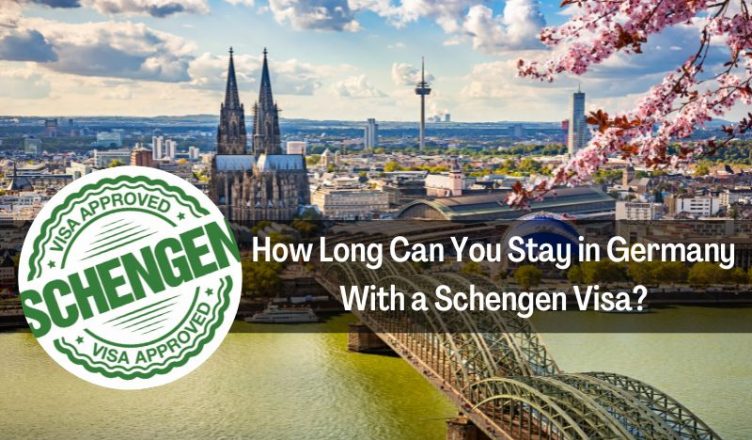A Schengen Germany visa is a key visa document for those who wish to visit one or more member countries located in the Schengen Area. In this area, there are a total of 26 European nations; Germany being one of them. With a Schengen Germany tourist visa, you can go to all 26 countries and stay there without the need for any other visa document.
Schengen visas can be of different types. If you have this Germany visit visa, its facilities will depend on the type of visa you have. Different Schengen visas fulfill the distinct needs of visitors. Read on to know about the validity and other key aspects of this visa.
What is a Schengen Germany Tourist Visa?
A Schengen tourist visa for tourists is a visa that allows a visa holder to stay in Schengen countries for up to 90 days in a 180-day window, following their previous stay in a Schengen country. With a Schengen Germany tourist visa, you can stay in Germany for up to 90 days. Likewise, there are also Schengen visas for other countries.
Schengen Germany Visa Types
Depending on its type, a Schengen Germany Visa can be primarily classified into four categories. These include Schengen Visa types A, B, C, and D. Uniform Schengen Visa is the most common type of Schengen Visa you can apply for. It is ideal for a short vacation to European countries that belong to the Schengen area. It has a validity of up to 90 days and covers all the categories ranging from A to D.
Uniform Schengen Visa:
Type A Schengen Visa (Airport Transit Visa)
This type of Schengen Visa is meant for transit purposes. It is compulsory for those who travel from one non-Schengen country to the other and have to wait for some time to board a flight in-between. This form of visa does not allow its holder to enter a country in the Schengen Area.
Type B Schengen Visa
If you need to stay in a Schengen country for less than 5 days, you can apply for this form of visa.
Type C Schengen Visa
Most visitors use the Type C Schengen Visa for short stays. Appointed external providers, consulates, and embassies issue this form of visa. With it, you can travel freely from one Schengen country to the other in less than 90 days starting from the first day of your entry. It can be either optional or mandatory, depending on your nationality. To find out whether you need it or not, you must find out the visa requirements of a Schengen country before visiting it. A Type C Schengen Visa can be a single-entry visa, a double-entry visa, or a multiple-entry visa. These are meant for single entry, double entry, and multiple entries and have stickers “1”, “2”, and “MULT” respectively.
Type D Schengen Visa (National Long-Stay Visa)
If you are a non-Schengen national and want to visit Germany or any other Schengen country for either study or work, you must apply for a Type D Schengen Visa. With it, you can stay in Germany or your intended Schengen country for more than 90 days and up to a year. You can obtain it from a consular authority of the Schengen country that you wish to visit. As the National Long-Stay Visa is intended for a long-term stay, it is the ideal choice for traveling to Schengen country for family reasons, studies/training programs, professional activities, and tourism.
Multiple-Entry Schengen Visas
As the name suggests, these visa documents are for those who wish to reside in Germany or any other Schengen country for one year or three years, or five years. Based on this factor, you can apply for a one-year multiple-entry Schengen Visa, three-year multiple-entry Schengen Visa, and five-year multiple-entry Schengen Visa.
Multiple-entry Schengen Visa for One Year
If you have used the 3 visas within the last 2 years, you will be entitled in applying for Schengen visa. You require submitting evidence of the former visas & also your visits to the Schengen zone while applying for this Schengen Visa type. 90 out of each 180 days are in fact yours for entering.
Multiple-entry Three-year Schengen Visa
Those who have legally received and used a prior multiple-entry visa that was valid for 1 year within the previous 2 years are eligible to apply for a three-year multiple-entry visa. The 90/180 rule is in effect.
Multiple-entry Five-year Schengen visa
If you have obtained and legitimately used a prior multiple-entry visa that was valid for at least two years over the previous three years, you are eligible to apply for a 5-year multiple-entry visa.
Rule for 90/180 Schengen Visa
The nature of 90/180 regulation is one thing that holders of multiple-entry visas need to keep in mind. Most people believe that the 180-day period begins when their visa becomes valid, yet it really rolls over, so you must calculate backward from the day you intend to enter the Schengen Area again to make sure you have not stayed there for more than 90 days during the previous 180 days.
Germany Visa Fees
Children below 6 years of age can get a Schengen Germany Visa free of cost. The Schengen Germany visa is somewhere around AED 625 for both adults and children. There may be a slight difference in the visa fee for children between the ages of 6 and 12 years.
Germany Visa Validity
The validity of Schengen Visas varies, depending on their type. While the validity of Type B and Type C visas is less than 5 days and 90 days respectively, multiple-entry visas to Schengen countries follow a 90/180 Schengen Visa rule for validity. This rule may seem to be confusing to you on the surface.
Contrary to the perception that the validity of this visa starts from the date of its issue, it keeps rolling. The visa allows you to stay in Germany for less than 90 days, but there is a condition for it. The validity of the visa begins after the 180-day-cycle of your previous visit which lasts for less than 90 days. You can find the validity of your visa by checking this piece of information.
Documents & How to Apply for Schengen Visa Germany

To obtain a Schengen Visa for Germany, you must submit all the requisite documents. These include the ones below.
- A Schengen Visa application form filled out either in English or German
- Two recent passport photographs
- A valid passport (with 30 days of validity) with 2 blank pages
- Itinerary of the trip that you wish to take
- Proof of accommodation if you stay with a friend or relative or proof of hotel booking
- Proof of the payment of visa application fee
- Proof of medical insurance with a cover of up to 30,000 Euros
- Financial documents (either a bank statement that is not more than 3 months old or a sponsorship letter from a person who wants to give support for the expenses of your trip.
- No objection letter
- Proof of employment (for job holders) and a letter from an educational institution (for students)
For a Germany visa, you will need to download Germany visa application form available online and fill it up. Thereafter, you need to submit it to the German embassy or consulate in your country along with the aforementioned documents. You will also need to appear for an interview which will be conducted by the officials.
Conclusion
By knowing about the ins and outs of applying for a Schengen Germany tourist visa, you can apply for it according to the stated rules and regulations. It will be helpful in the successful processing of your visa application. Keep the above-mentioned documents handy so that you can upload them whenever necessary. Also, don’t forget to choose the right kind of Schengen visa depending on your purpose for visiting Germany.
